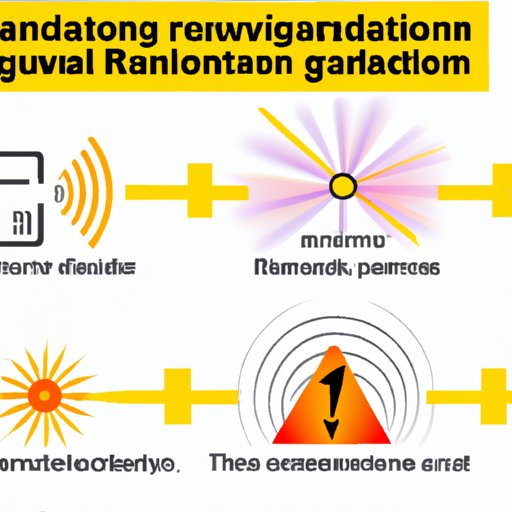Introduction
Electromagnetic radiation is all around us, but many people don’t know which type of radiation has the longest wavelength. The purpose of this article is to provide information about different types of electromagnetic radiation and to help readers better understand how it affects our daily lives.
Understanding Electromagnetic Radiation: The Longest Wavelength Explained
Electromagnetic radiation is a form of energy that travels through space at the speed of light. It is made up of both electric and magnetic fields that oscillate perpendicular to each other. The different types of electromagnetic radiation are classified based on their wavelength and frequency.
The various types of electromagnetic radiation, from longest to shortest wavelength are: radio waves, microwaves, infrared radiation, visible light, ultraviolet radiation, X-rays, and gamma rays. Of these, radio waves have the longest wavelength and gamma rays have the shortest wavelength.
The longest wavelength of electromagnetic radiation has the least amount of energy and is therefore typically the least harmful to humans. Radio waves, for example, are used in our daily lives for radio and TV broadcasting as well as for telecommunications.
From Radio Waves to Gamma Rays: A Closer Look at Electromagnetic Radiation
Radio waves have a wavelength of about 1 centimeter to 100 kilometers. They are used to broadcast music, news, and other information through radios, televisions, and mobile phones. Microwaves, with a wavelength ranging from 1 millimeter to 1 meter, are used for cooking food, wireless communication, and in radar equipment.
Infrared radiation has a wavelength from 0.7 micrometers to 1 millimeter and is used in remote controls, temperature measurement, and in the treatment of physical injuries. Visible light has a wavelength from 400 to 700 nanometers and is used to provide vision to the human eye, as well as in lighting systems and optical communication.
Ultraviolet radiation has a wavelength ranging from 10 nanometers to 400 nanometers and is found in sunlight, tanning beds, and some medical and industrial applications. X-rays have a wavelength ranging from 0.01 to 10 nanometers and are used in medical and dental imaging as well as in some industrial applications. Gamma rays, with a wavelength of less than 0.01 nanometers, are produced by the decay of atomic nuclei and are used in radiation therapy for cancer treatment and in nuclear medicine.
How to Protect Yourself from Electromagnetic Radiation: What You Need to Know
Prolonged exposure to different types of electromagnetic radiation can have an impact on human health. For example, ultraviolet radiation from the sun can cause skin cancer and cataracts, while prolonged exposure to X-rays can increase the risk of cancer.
To protect yourself from harmful exposure to electromagnetic radiation, we recommend limiting the time you spend in direct sunlight, wearing protective clothing and sunglasses, and using sunscreen with a high sun protection factor (SPF). It’s also advisable not to use cell phones excessively, especially for prolonged periods, and to use a headset or speakerphone when talking on the phone to reduce exposure, as well as avoiding sleeping with your phone next to your head. You can also avoid using electronic devices before going to bed to have a better sleep.
Are You at Risk for Electromagnetic Radiation Exposure? Here’s What You Should Know
Everyday household items emit electromagnetic radiation including cell phones, computers, and microwave ovens. When exposed to prolonged radiation, it can increase your risk of cancer, cell damage or inflammation.
Reducing exposure to electromagnetic radiation can be done by keeping a safe distance away from machines with powerful electromagnetic fields such as some medical equipment or power plants. And also by spending less time in close proximity to electronics like cellphones and laptops and keeping them away from your body.
Measuring Wavelengths: How Scientists Determine The Longest Electromagnetic Radiation
Scientists measure wavelengths using spectrometry. Spectrometers can detect the different types of electromagnetic radiation, ranging from radio waves to gamma rays. They provide information on the amount and intensity of the radiation detected. Scientists use this information to understand the behavior of different types of radiation. Spectroscopy is also used in astronomy to study the composition of stars and galaxies, and in telecommunications to determine the most efficient way to transmit information through a medium.
Conclusion
Electromagnetic radiation is an important part of our daily lives, from radio waves used for telecommunications to gamma rays for medical applications. It is important to be aware of the different types of electromagnetic radiation and the potential risks of prolonged exposure. We can take steps to protect ourselves by limiting our exposure to radiation and following safety guidelines, making simple adjustments to our behavior. Remember, by taking safety precautions and knowing the risks of exposure, we can protect ourselves from harmful radiation.
